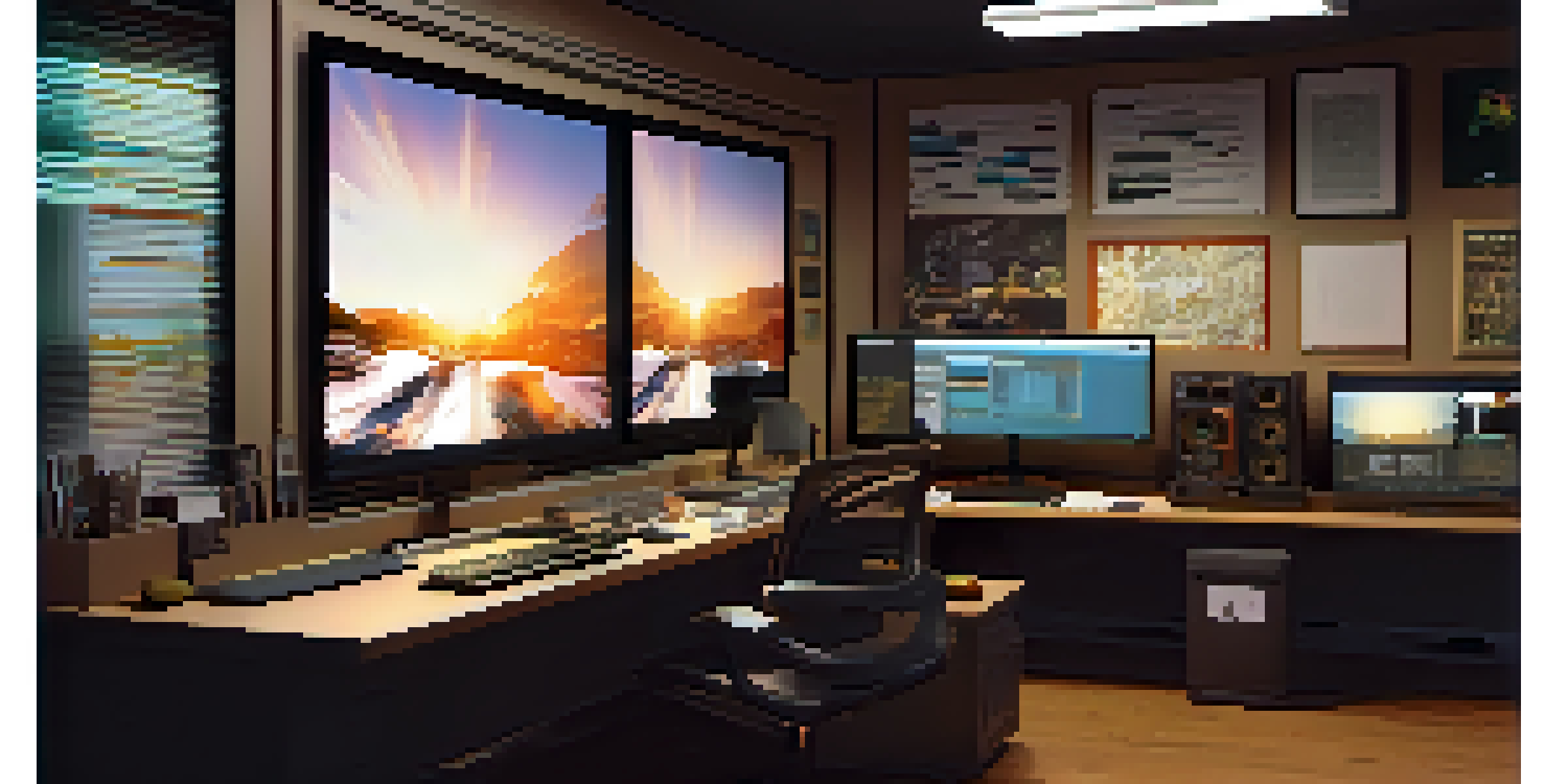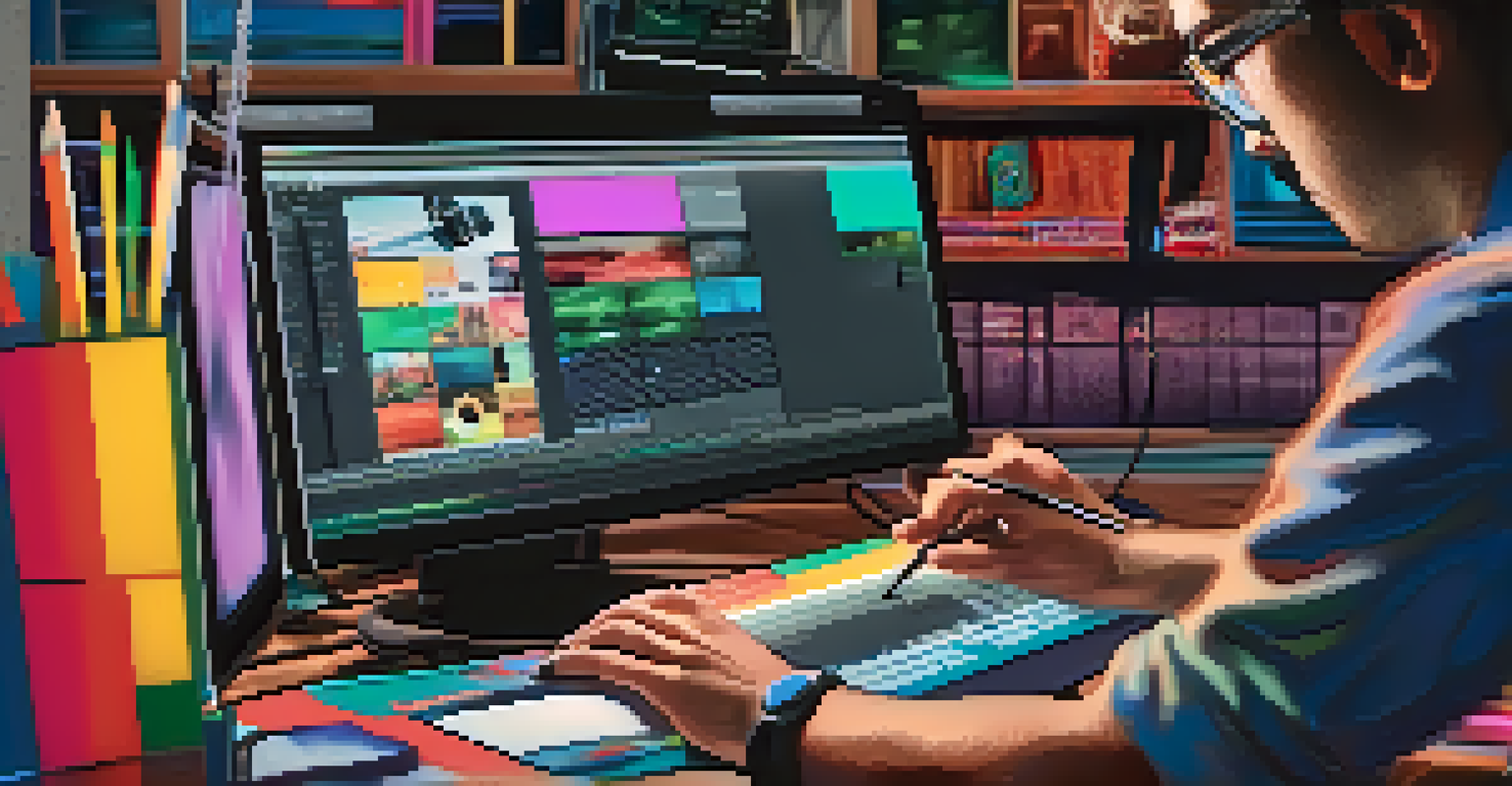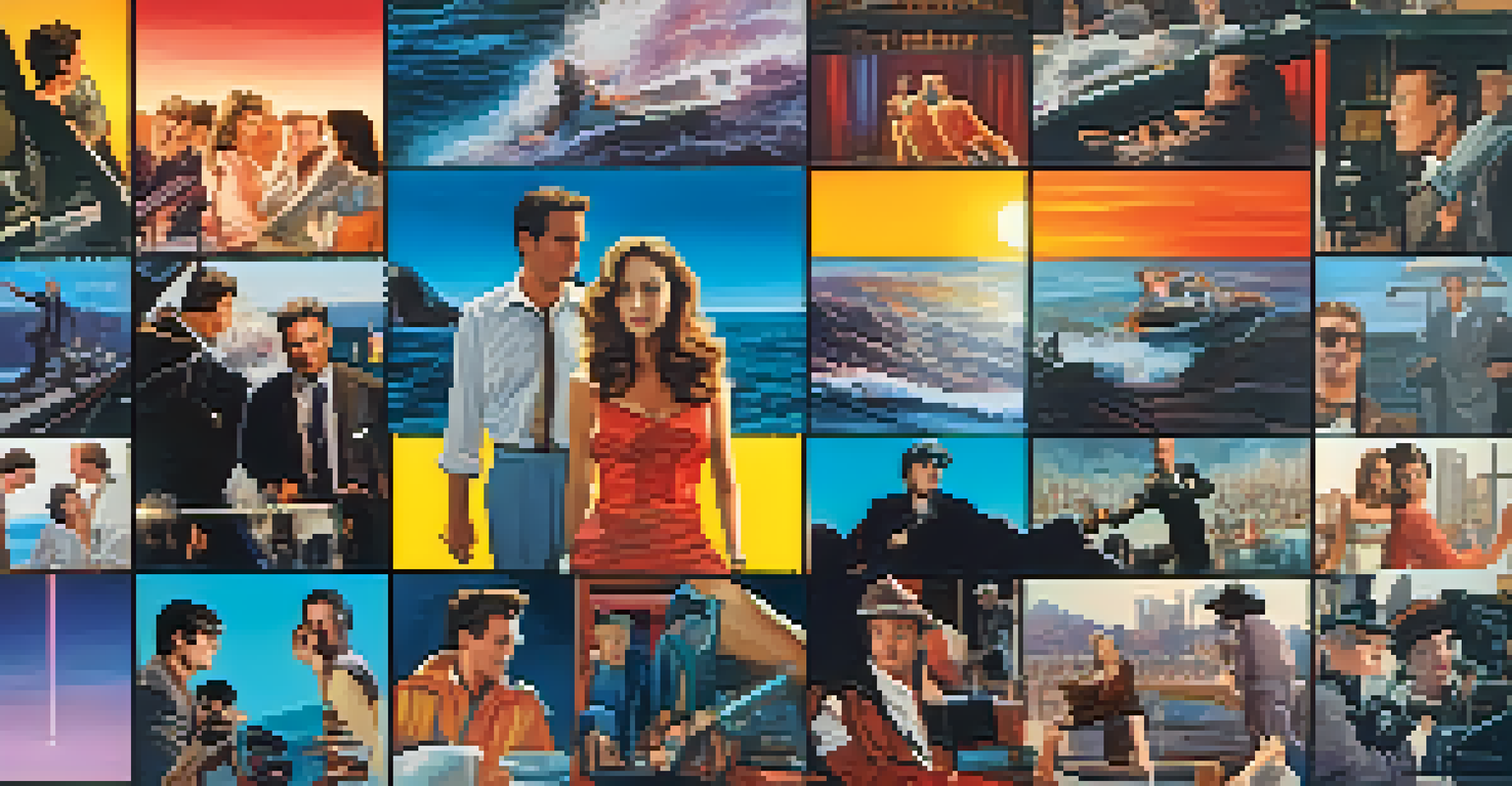Exploring the Impact of Editing Techniques on Film Narratives

Understanding Film Editing: A Brief Overview
Film editing is the process of selecting and combining shots to create a coherent narrative. It’s like piecing together a puzzle where each piece plays a crucial role in the overall picture. Editors work closely with directors to shape the story, pace, and emotional impact of the film.
Editing is the art of making sense of the chaos.
Through techniques like continuity editing, jump cuts, and montage, editors can significantly influence how a film is perceived. For example, continuity editing helps maintain a seamless flow of action, keeping the audience engaged without distractions. In contrast, a jump cut can create tension or disorientation, leading viewers to experience the narrative differently.
Ultimately, the art of editing is about storytelling. A well-edited film can evoke emotions, build suspense, and take viewers on a journey, all through the careful arrangement of scenes and shots.
The Role of Editing in Establishing Pacing
Pacing is crucial in film, as it controls how quickly a story unfolds. Editing techniques determine the rhythm of a scene, impacting how audiences perceive time and urgency. Fast cuts may create excitement or tension, while longer takes can deepen emotional resonance.

For instance, in action films, rapid editing can heighten adrenaline, making viewers feel the rush of a chase or battle. Conversely, in a drama, slower cuts allow for reflection, giving audiences time to absorb the weight of a character's decision. This manipulation of pacing can profoundly affect engagement.
Editing Shapes Film Narrative
Film editing is crucial for creating a coherent narrative by selecting and arranging shots to influence storytelling, pacing, and emotional impact.
Editors must balance these elements carefully, considering how each choice will serve the narrative. The right pacing not only maintains interest but also ensures that key moments land with the intended emotional impact.
Creating Emotional Impact Through Editing Choices
Editing can be a powerful tool for evoking emotions in audiences. By choosing which shots to include and the order in which they appear, editors can shape how viewers feel about characters and situations. This emotional manipulation is often subtle yet incredibly effective.
The best editing is the editing you don’t notice.
For example, a series of close-up shots can draw attention to a character's facial expressions, highlighting their inner turmoil or joy. Alternatively, cutting between contrasting scenes—like a joyous celebration and a somber farewell—can create a poignant emotional juxtaposition. These choices encourage viewers to feel more deeply connected to the narrative.
The emotional weight of a film often hinges on these editing decisions. By understanding how to craft emotional arcs through editing, filmmakers can transform ordinary moments into extraordinary experiences for the audience.
Using Editing Techniques to Enhance Storytelling
Storytelling in film goes beyond the script; it’s also about how the story is presented. Editors employ various techniques to enhance storytelling, such as parallel editing, which intercuts between two or more narratives happening simultaneously. This technique can create suspense and highlight thematic connections.
For instance, in thrillers, parallel editing might show a character in danger while simultaneously revealing the antagonist's approach. This creates tension as viewers are privy to information that the character lacks, heightening the stakes. Such techniques keep the audience on the edge of their seats.
Emotional Impact Through Choices
Editors evoke emotions by strategically choosing shot sequences, enhancing audience connection to characters and situations.
By blending different narratives and perspectives, editors can enrich the storytelling experience. This not only adds depth but also allows for a more immersive engagement with the film’s themes and characters.
The Impact of Montage on Film Narratives
Montage is an editing technique that condenses time and space to convey complex ideas quickly. By juxtaposing various images and sounds, editors can create a powerful effect that tells a story in a concise manner. It’s like a visual summary that can evoke emotions and ideas more efficiently than dialogue alone.
Classic examples include the training montages in sports films, where quick cuts show a character’s growth and determination over time. This technique can transform a long passage of time into a series of impactful moments, making it easier for the audience to grasp the character's journey.
Montage can also be used to comment on social issues, as seen in films like 'Battleship Potemkin.' Here, the rapid succession of images serves to create a sense of urgency and highlight the gravity of the narrative. This ability to convey complex themes succinctly is what makes montage an invaluable tool in film editing.
The Influence of Editing on Audience Perception
The way a film is edited can dramatically alter audience perception. Editors have the power to shape how viewers interpret characters, themes, and even the moral of the story. By choosing which moments to emphasize and which to minimize, they guide the audience’s emotional journey.
For example, a sympathetic character may be framed in a positive light through careful editing, while a villain might be shown in shadowy or chaotic scenes. This visual storytelling influences how audiences respond to the characters and their actions, often leading to a more profound connection or aversion.
Future of Editing with Technology
Advancements in technology, including AI and immersive techniques, are transforming film editing and expanding creative storytelling possibilities.
Understanding this influence is crucial for filmmakers, as it underscores the responsibility that comes with editing. The choices made in the editing room can resonate deeply with audiences, shaping their understanding of the narrative long after the credits roll.
Future Trends in Film Editing Techniques
As technology advances, so do the techniques used in film editing. Digital editing software has opened up new possibilities, allowing for more intricate and creative approaches to storytelling. Editors can now manipulate footage in ways that were once unimaginable, enhancing the overall narrative experience.
For instance, virtual reality (VR) and augmented reality (AR) are beginning to influence how stories are told, allowing viewers to engage with films in an interactive manner. This shift challenges traditional editing techniques and encourages editors to think outside the box, crafting narratives that are immersive and participatory.

Looking ahead, the integration of artificial intelligence in editing processes is also on the rise. AI can assist in organizing footage, suggesting cuts, and even analyzing audience reactions to improve storytelling. As these technologies evolve, they will undoubtedly reshape the landscape of film editing and its impact on narratives.